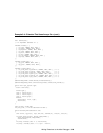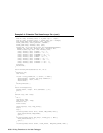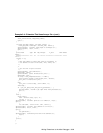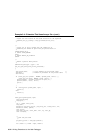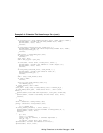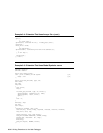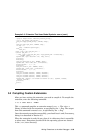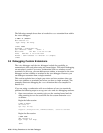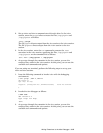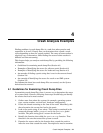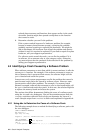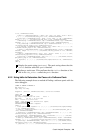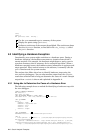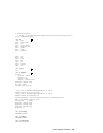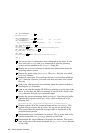2. Set up kdbx and dbx to communicate with each other. In the kdbx
session, enter the procpd alias to create the files /tmp/pipein and
/tmp/pipeout as follows:
(kdbx) procpd
The file pipein directs output from the dbx session to the kdbx session.
The file pipeout directs output from the kdbx session to the dbx
session.
3. In the dbx session, enter the run command to execute the test
extension in the kdbx session, specifying the files /tmp/pipein and
/tmp/pipeout on the command line as follows:
(dbx) run < /tmp/pipeout > /tmp/pipein
4. As you step through the extension in the dbx session, you see the
results of any action in the kdbx session. At this point, you can use the
available dbx commands and options.
If you are using one terminal, perform the following steps to set up your
kdbx and dbx sessions:
1. Issue the following command to invoke kdbx with the debugging
environment:
# echo ’procpd’ | kdbx -k /vmunix &
dbx version 5.0
Type ’help’ for help.
stopped at [thread_block:1403 ,0xfffffc000032d860] Source not available
#
2. Invoke the dbx debugger as follows:
# dbx test
dbx version 5.0
Type ’help’ for help.
(dbx)
3. As you step through the extension in the dbx session, you see the
results of any action in the kdbx session. At this point, you can use the
available dbx commands and options.
Writing Extensions to the kdbx Debugger 3–37



